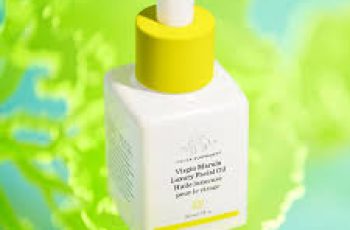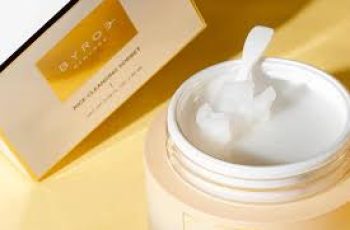
A New Guide to Botox: Which is Best for You?
If someone says they’re getting Botox injections, they probably mean something else. In fact, there are four related injectables on the market: Botox, Dysport, Xeomin, and Jeuveau.
They all use botulinum toxin to smooth wrinkles, reducing signs of skin aging in the same way. However, there are many misconceptions about how this works.
“A lot of people think of them as fillers, but they are paralyzing substances.
These injections block the nerve endings from transmitting electrical impulses to the muscles, which prevents the muscles from contracting properly,” says Dr. Philip R. Langston.
A facial plastic surgeon in Germantown, Tennessee, and past president of the American Academy of Facial Plastic and Reconstructive Surgery (AAFPRS).
If you can’t move your muscles, you can’t make facial expressions that create fine lines and wrinkles, which over time can become permanently embedded in your face.
(However, if done correctly by a trained professional, you won’t look “frozen” or expressionless.)
These wrinkle-reducing effects don’t usually appear overnight—while muscle activity typically subsides within five to 15 days after injection, it can take up to four weeks,
according to a July 2021 meta-analysis published in the Cochrane Database of Systematic Reviews that analyzed 65 randomized controlled trials of neurotoxins for treating facial wrinkles.
The researchers also noted that Botox isn’t without its risks. The most common side effect is ptosis (drooping eyelids).
In addition to Botox, Dysport, Xeomin, and Jeuveau, a neurotoxin called daxibotulinumtoxinA (Daxi) may soon receive U.S.
Food and Drug Administration (FDA) approval for the treatment of glabellar lines, according to Revance Therapeutics (Daxi’s developer).
Daxi will be available in doctors’ offices as early as fall 2022, giving you five neurotoxin options.
In the world of Botox, there’s also a growing interest in certain types of treatments that use these injectable substances, including “Baby Botox,” “BlowTox,” “BroTox,” “NewTox,” and “Budget Botox.”
Here you’ll learn what they mean, how to choose the right treatment for you, and what warnings to consider before treatment.
Baby Botox: The best solution for those who want to prevent aging
Depending on the problem, there are different opinions on when Botox makes sense.
“For younger patients, Botox can prevent or slow the onset of wrinkles, especially around the eyes, eyebrows, and forehead,” says Dr. Patrick J. Byrne.
A facial plastic and reconstructive surgeon and director of the Cleveland Clinic Head and Neck Institute in Ohio. (“Younger” is relative; Dr. Byrne says he’s treated some patients in their twenties.)
“The term ‘baby Botox’ generally describes a desire for subtle changes rather than drastic changes,” Byrne says. In these cases, doctors inject smaller amounts of Botox.
“Baby Botox injections embody a growing trend to expand the market, offering smaller, more subtle changes to a wider range of patients,” he says.
There’s one area where this approach is particularly effective: the eyebrows. “For younger patients, Botox can be used to improve muscle balance.
We can lift, shape and contour the brow,” says Byrne.
BlowTox: The best solution to combat scalp sweating
Do you have a problem with excessive scalp sweating? Botox can help. So-called “BlowTox” is a Botox treatment injected into the scalp that can prevent scalp sweating.
For some people, this excessive sweating indicates the presence of a condition called hyperhidrosis, according to the International Hyperhidrosis Society.
(Your doctor can help you determine this.) Others want to control scalp sweating to maintain their hairstyle.
When your scalp sweats (like in the summer heat or after a strenuous workout), your hair can become limp and lifeless.
BloxTox may appeal to women who frequently visit salons to blow-dry their hair.
“There’s a growing trend toward injecting Botox into the surface of the scalp to keep hair longer,” says Dr. Joshua Zeichner, director of cosmetic and clinical research in dermatology at Mount Sinai Hospital in New York City.
It makes sense: “Botox works by reducing sweat and sebum production. It’s even FDA-approved for treating excessive underarm sweating (hyperhidrosis),” says Dr. Erasmus.
Botox injections block chemical messengers that activate sweat glands, explains the International Hyperhidrosis Society.
When there’s less sebum and sweat in the scalp, hair no longer sticks together as it should, Zeichner adds.
The downside? Treatments are expensive, Zeichner says, because a lot of Botox is needed to cover such a large area.
Since the effects last three to five months, you’ll need two to four treatments per year to keep your scalp sweat-free.
BroTox: The best treatment for men who want to fight wrinkles
Don’t assume Botox treatments are just for women. Neurotoxins are one of the most common surgical and nonsurgical treatments for men, according to the 2021 AAFPRS report.
Plastic surgeons surveyed said their male patients undergo restorative treatments to stay “professionally relevant and competitive.”
One of the most popular treatment areas? 1911s. “Many men have deep wrinkles between their eyebrows. Deep wrinkles can make you look older and even angrier,” Dr. Langston says.
He also notes that many men get Botox injections in their crow’s feet and frown lines, which can lift droopy brows and make you look more alert or less serious.
Jeuveau (“Newtox”): The Best Solution for Botox-Ex Users
The latest buzzword refers to a new injectable neurotoxin on the market: Jeuveau.
A 2019 press release announced that manufacturer Evolus had received FDA approval for treating moderate to severe glabellar lines (wrinkles between the eyebrows).
At the time, the injectable was called “Newtox.”
Although Jeuveau is relatively new to the injectable world, experts are already seeing good results.
“Even though Jeuveau is nearly identical to Botox, it seems to work better for most people,” says Dr. Ben Talei, owner of the Beverly Hills Plastic and Laser Surgery Center in California.
One reason: Long-time users of Botox can develop a tolerance over time.
“We often hear from patients that they had better results with Botox injections a few years ago, even though the muscles were weaker after the injections,” he says.
In that case, you should ask your doctor if this change is right for you.
Another potential advantage: Jeuveau works quickly, according to Dr. Talei.
In a study published in March 2019 in the journal Dermatologic Surgery, researchers reported that subjects who used Jeuveau noticed a “significant difference” in aesthetic improvement as early as the first post-treatment visit the next day compared to the placebo group.
A June 2022 study published in Dermatologic Surgery also yielded an interesting result: Millennials responded better to Jeuveau than adults born in 1981 or earlier when treating frown lines.
They found that the neurotoxin worked faster and lasted longer, perhaps because younger people have less noticeable wrinkles and respond more to treatment.
Additionally, the appearance of wrinkles may improve even with regular use while resting, which the authors suspect may be due to changes in soft tissue after repeated use.
Cheap Botox: A Dangerous Beauty Trend to Avoid
A worrying trend is that more people are choosing to self-administer Botox and using online videos to teach themselves how to inject the toxin into their faces.
A study published in August 2018 in the journal Plastic Surgery sheds light on the issue.
Researchers examined four online discussion forums on the topic and found that potential patients were purchasing unregulated Botox injection kits online, watching YouTube tutorials, and downloading “Botox injection programs” from the internet.
More worryingly, the authors note that although those affected knew their actions were risky, they justified it by citing their right to self-determination over their own bodies and choices.
Needless to say, self-injection of Botox is not safe; these injections must be performed by a properly trained physician.
There is also a high chance that medications purchased online are counterfeit.
According to the American Academy of Dermatology, injecting products that are not medically approved carries real risks, including long-term muscle paralysis, facial paralysis, and permanent eye damage.
For your health and safety and to achieve the best results, seek the advice of a properly trained and licensed physician, Byrne advises.
To find out if the doctor administering Botox to you is reputable, use the free search feature “Is my doctor licensed?” on CertificationMatters.org.


